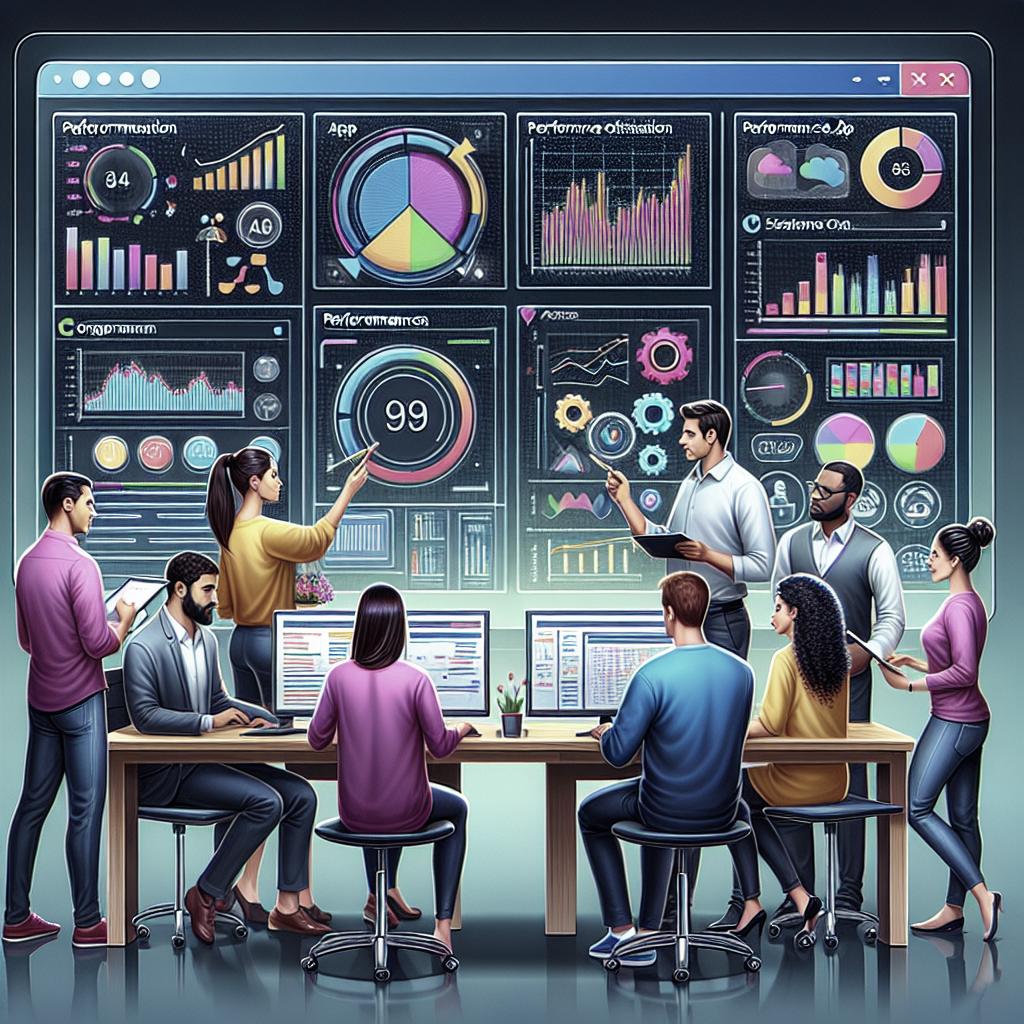Progressive Web Apps for Enterprises
Progressive Web Apps (PWAs) have reshaped the landscape for enterprises seeking to deliver seamless, app-like experiences to users without the need for downloading or heavy data consumption. This comprehensive article delves into the essence of PWAs, their growing popularity among businesses, and the technical requirements for their implementation. We’ll explore the myriad benefits and some limitations these modern solutions offer, highlight noteworthy real-world applications, and compare them with native and cross-platform apps. As enterprises continue to navigate digital transformation, understanding whether PWA development is the right choice could mark a turning point in business strategy.
What is Progressive Web App?
A Progressive Web App (PWA) is a type of application software delivered through the web, built using common web technologies including HTML, CSS, and JavaScript. It is intended to work on any platform that uses a standards-compliant browser, leveraging features like offline access, push notifications, and fast load times reminiscent of native mobile apps. PWAs aim to combine the best of web and mobile apps to offer seamless experiences to users.
PWAs are designed to be reliable and engaging, regardless of network conditions. One defining feature is the use of service workers, which manage caching and background sync, allowing the PWA to function offline or with weak internet connections. Additionally, they can be installed on the user’s home screen without the need to visit an app store, making access more direct and efficient.
Growing Popularity Of Progressive Web Apps (PWA)
Over the past few years, the popularity of PWAs has surged among enterprises due to their ability to bridge the gap between web and mobile app experiences. This growth is fueled by the increasing demand for faster, more reliable web experiences that don’t compromise on quality or user engagement. Companies are realizing the potential of PWAs in reaching wider audiences without the constraints of traditional app distribution.
Businesses across various sectors are adopting PWAs as a strategic tool to enhance customer engagement and drive growth. The convenience and accessibility of PWAs make them an attractive option for businesses aiming to enhance online presence without incurring the significant costs of developing and maintaining native apps for multiple platforms.
PWA Requirements
Developing a PWA requires adherence to certain technical requirements to ensure it delivers its promised benefits. Key elements include a secure HTTPS environment, a web app manifest, and a service worker. The HTTPS protocol ensures user data security, a non-negotiable aspect for user trust and safety.
The web app manifest file provides crucial information about the app, such as its name, icons, and themes, ensuring it is recognizable and installable. Meanwhile, the service worker acts as a proxy between the web app, browser, and network, facilitating functionalities like background syncing and offline access which are critical for an uninterrupted user experience.
PWA Benefits And Drawbacks
Technical Advantages of PWAs
The technical advantages of PWAs are paramount, with fast performance being at the forefront. This speed is a result of efficient caching and service worker operation, ensuring that the web apps load quickly and run smoothly across varying network conditions. Additionally, PWAs are highly responsive, providing a user interface that adapts seamlessly to different devices and screen sizes.
Other technical merits include cross-platform capability and lighter storage requirements compared to native apps. Since they leverage common web technologies, PWAs can run on virtually any device with a browser, reducing the need for separate app development for each platform and enabling easier maintenance and updates.
Marketing & Business Advantages of PWAs
From a marketing and business perspective, PWAs present significant advantages as they eliminate the friction associated with app stores, allowing users to install the app directly from the website. This ease of distribution helps in potentially increasing user acquisition rates and reducing churn. Furthermore, by not being bound to a particular app store, businesses can push updates more swiftly and respond dynamically to market and user feedback.
PWAs can also drive cost efficiencies, as the development and maintenance costs are often lower than those of native apps. This is particularly appealing to businesses with limited budgets or those looking to optimize their investment in digital infrastructure without sacrificing user experience.
Drawbacks Of PWAs
Despite their advantages, PWAs are not without drawbacks. Limitations include less access to device hardware and functionalities in comparison to native apps, such as Bluetooth, which can hamper the ability to offer certain features. There may also be inconsistencies in how features are supported across different browsers, impacting the user experience.
Additionally, while PWAs can be added to the user’s home screen, they often lack deep marketplace penetration because they don’t appear in app store search results unless specifically listed. This can affect discoverability, requiring companies to invest in alternative marketing strategies to reach potential users.
Who Is Using PWA Technology?
Twitter Lite
An exemplary user of PWA technology is Twitter Lite. Developed to provide a faster and more data-friendly experience, Twitter Lite has effectively halved data consumption and usage time compared to the native app. This move has proven beneficial for users in regions with less reliable networks and lower-end devices, widening Twitter’s global reach.
Alibaba
Alibaba, a behemoth in the e-commerce industry, adopted a PWA strategy to enhance its mobile web presence, achieving significant improvements in engagement and conversion rates. Its PWA delivers an experience that mimics native app functionality and speed, pivotal factors in streamlining customer journeys and enhancing overall user satisfaction.
The Washington Post
The Washington Post has successfully leveraged PWA technology to provide lightning-fast load times and an engaging news reading experience. Their PWA ensures readers get news quickly, even under poor network conditions, reflecting the company’s commitment to keeping its audience informed anytime, anywhere.
Lancôme
Lancôme’s adoption of a PWA has revolutionized its mobile shopping experience, dramatically increasing conversion rates and reducing bounce rates. The frictionless and app-like functionality offered by their PWA has enhanced customer satisfaction and loyalty, adding significant value to Lancôme’s digital strategy.
PWA vs Native Mobile Apps vs Cross-Platform Apps
Progressive Web Apps, native mobile apps, and cross-platform apps each represent unique approaches to mobile application development, with distinct advantages and trade-offs. Native apps are developed specifically for platforms like iOS or Android, enabling deep integration with device functionalities and providing superior performance and user experiences.
Cross-platform apps, on the other hand, are designed to operate across different operating systems with a single codebase, offering greater reach and resource savings. PWAs set themselves apart by utilizing web capabilities while simulating app-like experiences, bridging the advantages of both native and cross-platform methodologies without requiring app store approval.
Drawbacks And Benefits of PWAs, Native Apps, And Cross-Platform Apps
Each app type holds distinct pros and cons. Native apps shine in performance and access to device hardware but often demand high development costs and segmented resource allocation for different platforms. While cross-platform apps reduce code redundancies, they may not fully exploit platform-specific features, occasionally resulting in performance bottlenecks.
PWAs offer ease of distribution, lower cost, and maintainability while championing fast performance. However, limited access to system capabilities and potential browser-dependent inconsistencies can be a challenge. Thus, choosing the right approach entails careful consideration of the target audience, necessary functionalities, and budget constraints.
Is PWA Development The Right Choice For Your Business?
Deciding whether to embrace PWA development depends on the objectives and resources of your business. PWAs provide substantial advantages for businesses seeking to minimize app development costs while maximizing accessibility and user engagement. They are especially suitable for businesses targeting markets with bandwidth constraints or aiming for a unified digital solution across devices.
However, if your business model relies heavily on deep hardware integration or visibility on app stores, native or cross-platform apps might be more suitable. Evaluating your business needs, alongside understanding your audience’s preferences, will guide you in making an informed decision on the digital strategy: to PWA, or not to PWA.
Read More
For further insights into Progressive Web Apps and their impact on modern business strategies, consider exploring more in-depth resources and case studies. Learning from the experiences of industry leaders adopting PWAs can provide invaluable lessons on navigating the evolving digital landscape effectively.
Sources
To substantiate your understanding and enrich your knowledge, consulting diverse sources, including technical guides on PWA development, market analysis reports, and success stories of PWA adoption across industries, can be greatly beneficial.
Lessons Learned
| Aspect | Details |
|---|---|
| PWA Definition | An application that utilizes web technologies to offer a native-like experience. |
| Popularity | Increased demand due to their seamless blend of web and app functionalities. |
| Technical Requirements | HTTPS, web app manifest, and service workers needed for optimal performance. |
| Benefits & Drawbacks | Fast performance and lower costs but limited hardware integration. |
| Real-World Examples | Twitter, Alibaba, The Washington Post, and Lancôme demonstrate effective PWA use. |
| App Comparisons | PWA vs Native vs Cross-Platform, each with unique pros and cons. |
| Business Consideration | Depends on organizational goals, resources, and user needs. |


